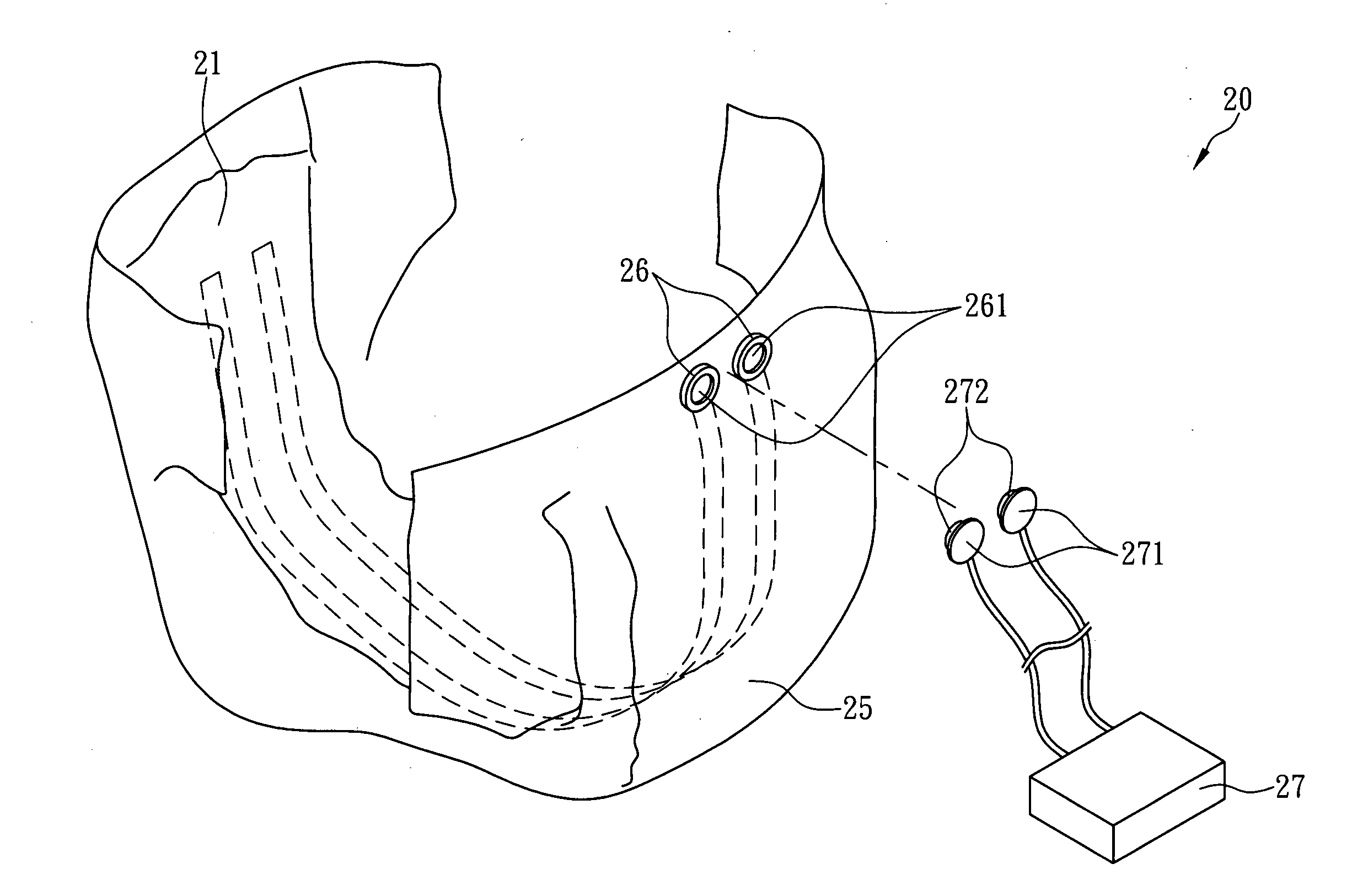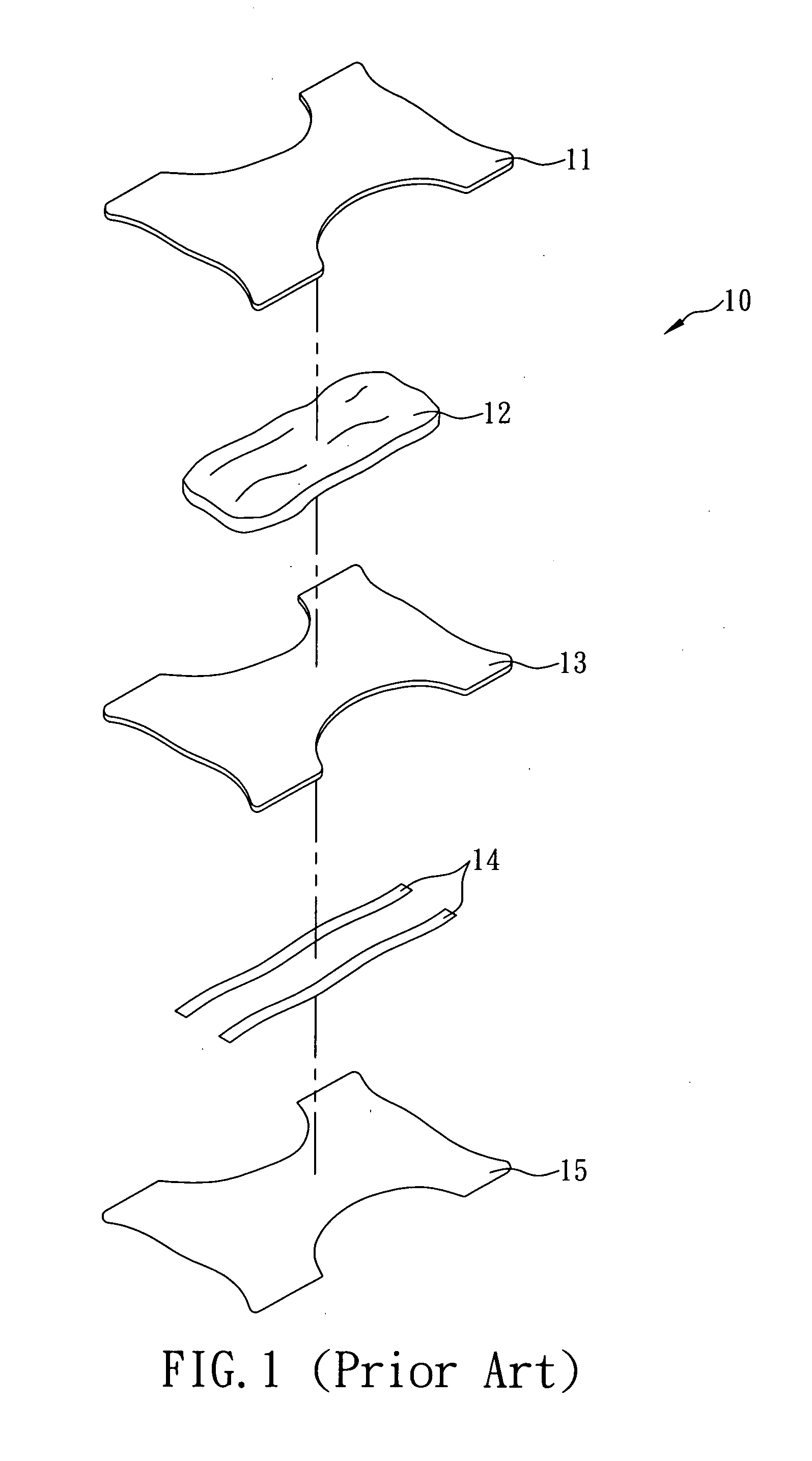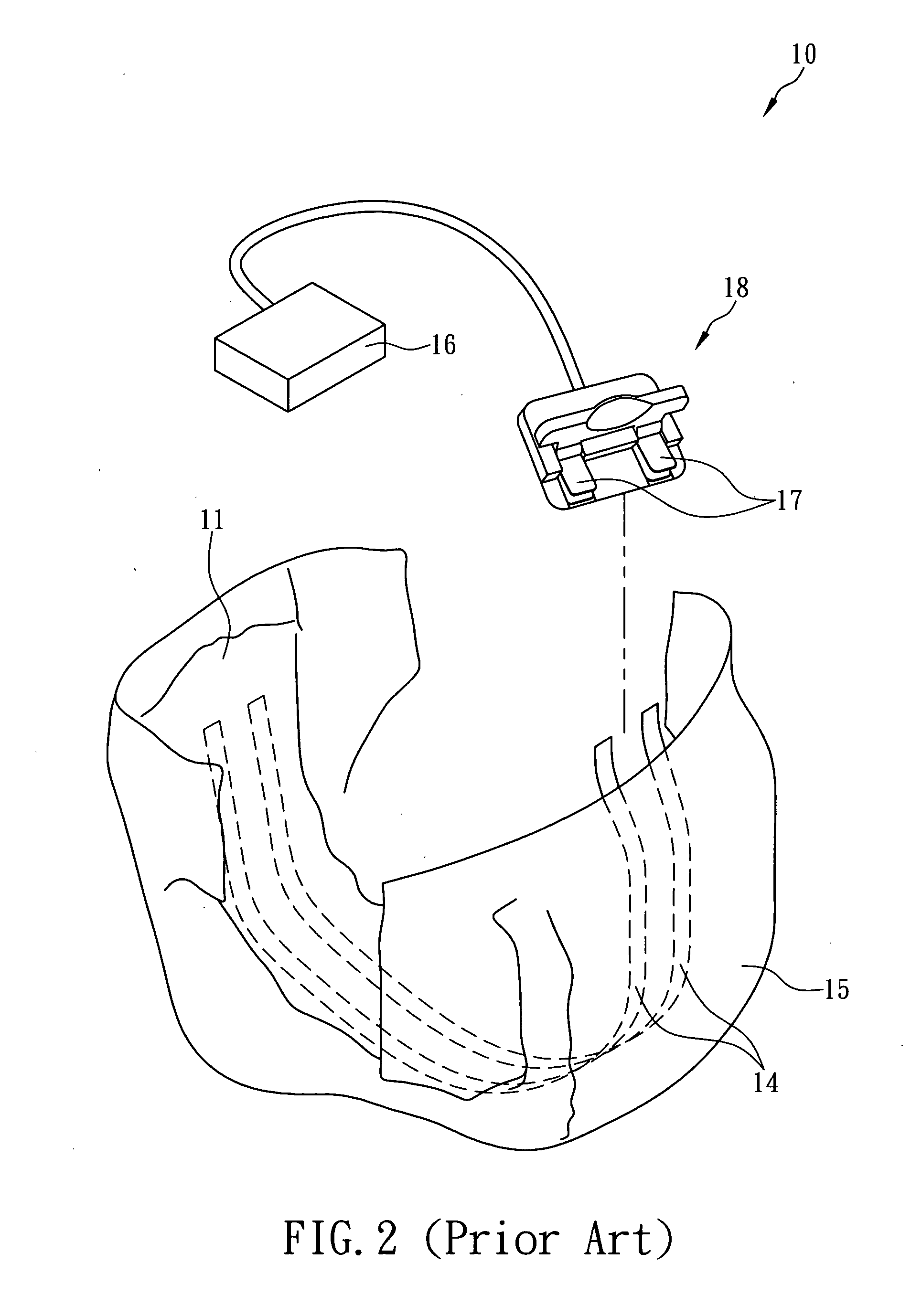Diaper structure with urine sensor
a technology of urine sensor and diaper structure, which is applied in the field of diaper structure with urine sensor, can solve the problems of user discomfort, skin irritation or even inflammation, and the sensitivity of urine detection by the product b>10/b> is compromised, and achieves the effect of easy pulling out of place and low sensitivity
- Summary
- Abstract
- Description
- Claims
- Application Information
AI Technical Summary
Benefits of technology
Problems solved by technology
Method used
Image
Examples
Embodiment Construction
[0016]The present invention provides a diaper structure with a urine sensor. Referring to FIGS. 3 and 4, a diaper structure 20 according to a first preferred embodiment of the present invention includes a first fabric layer 21, two electrode strips 22, a second fabric layer 23, an absorbent material layer 24, an anti-leak layer 25, and two metal button seats 26. The first fabric layer 21, made of a nonwoven fabric, is configured to allow urine discharged from the human body to quickly flow therethrough from a first side to a second side of the first fabric layer 21. The two electrode strips 22, each having a first side attached to the second side of the first fabric layer 21, are spaced from each other and, when in contact with urine, become electrically, connected to each other. The second fabric layer 23, also made of a nonwoven fabric, has a first side covering both the second side of the first fabric layer 21 and a second side of each of the two electrode strips 22; consequently...
PUM
 Login to View More
Login to View More Abstract
Description
Claims
Application Information
 Login to View More
Login to View More - R&D
- Intellectual Property
- Life Sciences
- Materials
- Tech Scout
- Unparalleled Data Quality
- Higher Quality Content
- 60% Fewer Hallucinations
Browse by: Latest US Patents, China's latest patents, Technical Efficacy Thesaurus, Application Domain, Technology Topic, Popular Technical Reports.
© 2025 PatSnap. All rights reserved.Legal|Privacy policy|Modern Slavery Act Transparency Statement|Sitemap|About US| Contact US: help@patsnap.com



